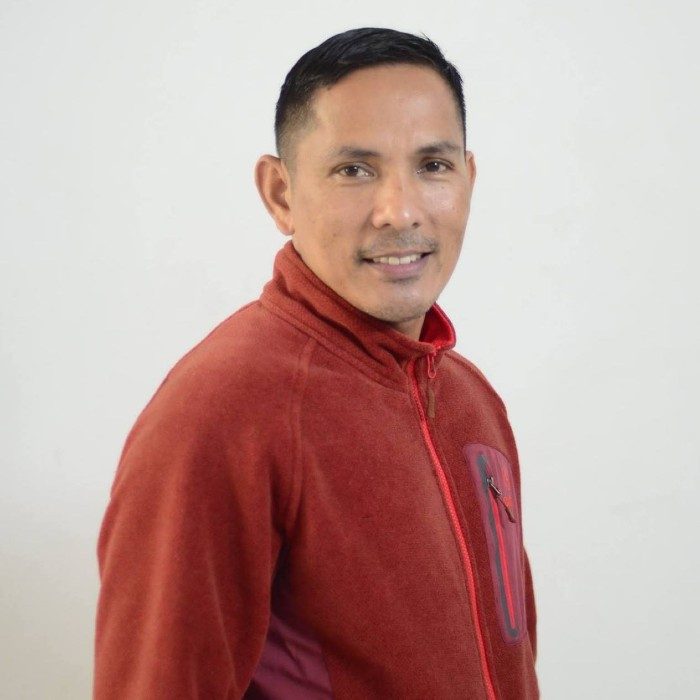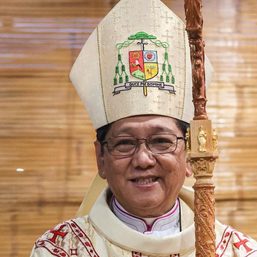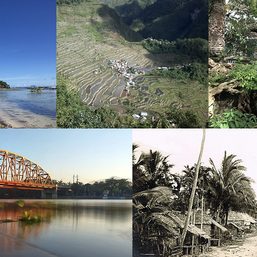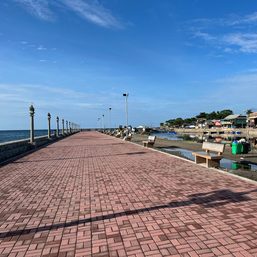SUMMARY
This is AI generated summarization, which may have errors. For context, always refer to the full article.

On Negros Island, gun violence is a part of life. But for most of the COVID-19 pandemic, it seemed to have been put on lockdown along with everything else.
With its number of coronavirus cases under control, the lockdown in the Central Visayas island ended on May 1, 2020.
Checkpoints eased and people were allowed to go out again. And it seems this was the opportunity those who had been threatening radio journalist Cornelio Pepino – known as Rex Cornelio – had been looking for.
“He had been receiving threats in the days leading up to the shooting,” Rex’s wife, Coleen Pepino, said in a phone interview.
Cornelio was shot 5 times by gunmen on motorcycles on May 5, 2020. Pepino, who was riding at the back of his motorbike, was unharmed.
If he were still alive, Cornelio would have turned 50 on Saturday, February 13.
In its October report, the Committee to Protect Journalists named the Philippines the 7th most dangerous place for journalists in the world, based on the number of killings of media workers that remain unsolved.
Months after the killing, Cornelio’s case is still one of those.
Cornelio was the 3rd radio journalist to be killed in the province of Negros Oriental since 2018.
A murder in November of another journalist – Virgilio Maganes – has placed the total number of journalists killed, so far, under the administration of President Rodrigo Duterte at 18, according to the National Union of Journalists of the Philippines (NUJP).
Duterte is known for his attacks on the media; he said early in his term that being a journalist “does not exempt one from assassination” and calls critical journalists “fake news.”
According to the tally by the NUJP, Cornelio was the 186th journalist killed since the fall of dictator Ferdinand Marcos in 1986.
Earlier on the same afternoon that Cornelio was shot dead, the Philippine Congress denied the franchise of the country’s biggest broadcast network ABS-CBN, a promise Duterte made shortly after he assumed office in 2016 due to the critical reporting of its news department. Cornelio had been a radio reporter for 20 years, focusing his coverage on corruption, governance and environmental issues in Negros Oriental.
Going the extra mile
Energy FM 93.7 station manager Florence Baesa, Cornelio’s boss, said he was meticulous in his reporting.
“All of his reporting was factual,” she said. “And he’d always go the extra mile to verify his sources – even going all the way to Cebu to check documents on environmental compliance of projects in the province.”
According to Baesa, Cornelio’s integrity and courage to pursue stories no others were pursuing would often get him in trouble.
In 2015, for example, Cornelio was sued for libel by Negros Oriental Governor Roel Degamo for his coverage of illegal gold mining in Santa Catalina town.
A local judge ruled in favor of Cornelio in 2017.
The Dumaguete Post quoted judge Catherine Dato in her decision to acquit: “The prosecution must understand that in criminal libel, the imputation of a crime, a vice or defect must be plainly clear and categorical, and cannot be left to presumptions, conjectures, inferences, guesswork or surmises.”
Baesa said that the judge’s decision was a testament to Cornelio’s work ethic.
“Everything he reported on and did on his editorial shows were based on facts,” she said. In the case filed by Degamo, the judge also considered that Cornelio went to get Degamo’s side of the story and waited for him all day outside his office, but got no answers.
Coleen Pepino said, however, that while radio commentators often got in trouble for emotionally charged commentaries, Cornelio – who did both editorials and straight news – was always calm and stuck to asking questions and basing his opinion on facts.
“You’d never hear him curse anyone, shout or get angry,” she said. “He was brave, but a kind man. You could tell by the number of people who came out to his funeral. Many people told me about how Rex was always willing to help them out when they needed it.”
Coleen is left with 3 children and without employment, getting by only with the help of friends and family.
“My daughter cries when I’m not around. I’ve been crying a lot at night, but I try to stay strong for my children,” Coleen said. Lately, she said, her crying was for justice, which is often elusive in the Philippines.
Awaiting protection and justice
In July 2020, the presidential task force on media security took over the investigation to avoid conflict as one of Degamo’s security aides – police officer Ruel Piñero – was himself named a person of interest in the investigation.
This was a task force created by the Duterte administration in 2016 for the protection of journalists and to investigate killings of media workers in the Philippines. The investigation is still pending and Piñero remains on active duty.
The killings of two other radio journalists in Dumaguete City had also not yet been solved at the time of writing. Dindo Generoso was killed in November 2019 while Edumund Sestoso was shot dead in April 2018.
Violence has been a perennial struggle for everyone on the island and this is the very reason journalists who cover social unrest are often caught in the crossfire of conflicts between landlords, organized workers, and the insurgency, in addition to dealing with corruption and governance issues.
Both Negros Oriental and the neighboring Negros Occidental, which are mainly agricultural economies, are consistently on the list of the 10 poorest Philippine provinces.
This environment makes the island ripe for violence.
In 1986, Roman Catholic Bishop Antonio Fortich was quoted in The Washington Post as calling the island a “social volcano” due to the violence caused by poverty.
“If this is not well handled, this will be the first province to explode,” Fortich said in the report back then.
Not much has changed on the island since then.
Despite efforts by government and non-governmental organizations to create mechanisms to protect journalists who face harassment and threats – and obtain justice for those who are killed – journalists who become victims of violence hardly ever see convictions, according to the NUJP.
Its Bacolod City chapter president, Marchel Espina, knows of the dangers journalists face in Negros all too well. From 2018 to 2019, due to intensified “anti-insurgency” operations, the island saw increased killings of farmers, activists, and labor leaders.
Espina, who was a reporter for the Visayan Daily Star and a correspondent for Rappler, had a close encounter herself while covering a string of murders on the island. In the last week of July 2019, she tallied 15 riding-in-tandem killings (murders carried out by killers on motorbikes) and told Index: “I was tailed by unidentified men for pursuing this story on my way back to Bacolod from another town.”
She added: “Intel officers sometimes take photos of journalists who attend press freedom rallies. Many of them are often red-tagged or are accused of being part of the communist party and its armed wing, the New People’s Army.”
The NUJP has been advocating for the safety of journalists – and accountability for those who threaten or attack journalists – since it was established in 2005. But justice moves slowly in the Philippines.
It took a decade, for example, for the courts to convict Zaldy and Andal Ampatuan for the 2009 Maguindanao massacre in which 32 journalists were among 58 people killed in one of the worst political killings in recent Philippine history.
But Cornelio’s family and friends are hopeful that the police and courts will do the right thing in his case.
“I saw that there are people who are still doing the right and just thing,” Coleen said in a press conference in August.
Her shirt read, “You can silence this voice, but this message will make noise”. She added: “My husband decided to be good, for what is right. I accepted it and supported it.” And she encouraged others to do the same, saying: “I hope that you would tell your loved ones to do the right thing as well.”
Non-stop threats
In the 20 years that Baesa knew Cornelio, she said that there was always someone angry about his work, and he had become accustomed to local officials passively or directly threatening his life.
Cornelio was relentless in his pursuit of environment stories and local governance. His stories made an impact, including his exposés leading to potentially destructive quarrying and mining projects being halted by the national government.
In 2019, watchdog Global Witness said that the Philippines was the most dangerous place to be an environmental activist, with at least 113 people killed under the Duterte administration. About 27% of these killings were of people who protested mining projects. Because the threats had intensified, Cornelio had a police escort assigned to him – an escort he asked to stop following him a week before he was killed.
“He didn’t like that police officers had to follow him everywhere and felt bad for them when he was doing his work,” Coleen said. “He was brave. I had asked him if he could stop. ‘What about me?’ I asked him.”
Coleen said he told her, “If this is God’s will, then we have to accept it.”
Investigation hits a wall
Even though Duterte’s media task force has taken over the investigation, Baesa believes it is still moving too slowly because “big” and “powerful” people are involved.
The police officer Piñero disappeared for several days in August, later turning up more than 160 kilometers away in Cebu City after his wife filed a writ of habeas corpus to locate him.
Police said he was en route to a reassignment in Metro Manila, pending the investigation to see if he was involved in Cornelio’s killing.
This is a common practice of the Duterte administration.
Police officers are often reshuffled to other departments or assigned to other areas if accused of misconduct, committing a crime or being involved in drugs or corruption.
The task force has yet to determine if Piñero was involved, and it does not have substantial information on who killed Cornelio. But despite the grim odds, Coleen has not given up hope that justice will be served for her husband. “For as long as there are good people, there is hope,” she said. “Those in power, they won’t be in power forever.
And whatever wrong they do, it will come back to them.”
Journalism must continue
Baesa, who used to string for Cebu-based media outlets, alongside managing the radio station, is working from home due to threats to her security.
“It was always the two of us who were willing to pursue the stories that hold our local elected officials accountable,” she said. “For now, they advised that I should not go to the [radio] station because that’s a security vulnerability.”
But in an environment where corruption is rampant and accountability from public officials lacking, the veteran journalist said the threats would not stop her from doing her work.
“We were partners in a lot of the stories we pursued. We’d get documents, do the research, get the news.”
Right now she is managing 4 reporters who are also chasing stories on local governance, the environment and other issues, on top of the ongoing COVID-19 pandemic.
“I tell my reporters, ‘Don’t be afraid.’ We have to pray and be careful and get all sides. But if we don’t do it, who will?” she said.
Baesa said that despite the continuing threats to her own safety, she cannot – and will not – stop pursuing accountability stories from local officials. “I’ll continue doing it ethically – professionally. If someone gets angry or hurt by what we do, I can’t do anything about that. If I shut up every time someone gets angry, what will happen?” – Rappler.com
This modified version of the story was originally published in the Winter Edition of Index on Censorship magazine and produced in collaboration with Rappler. You can read the magazine here.
Add a comment
How does this make you feel?






There are no comments yet. Add your comment to start the conversation.